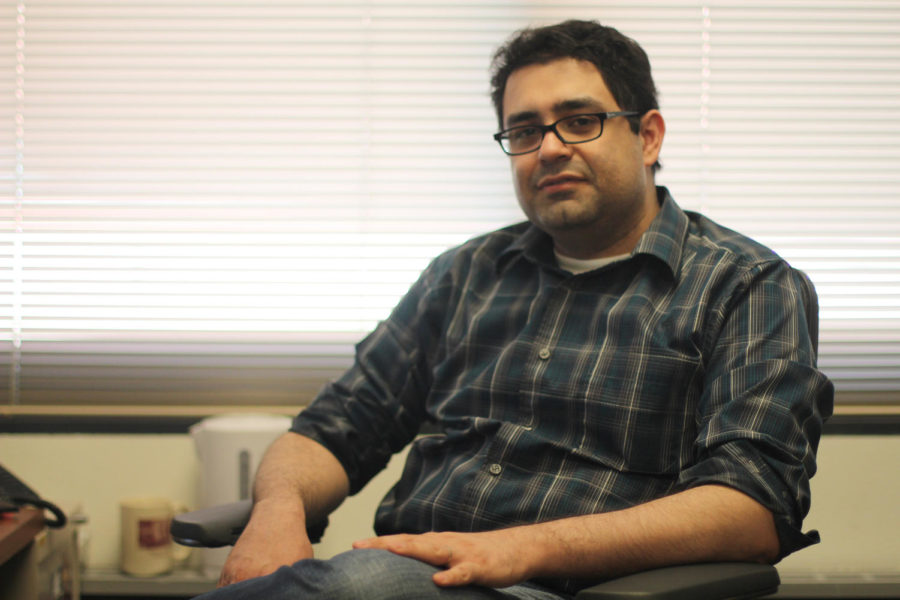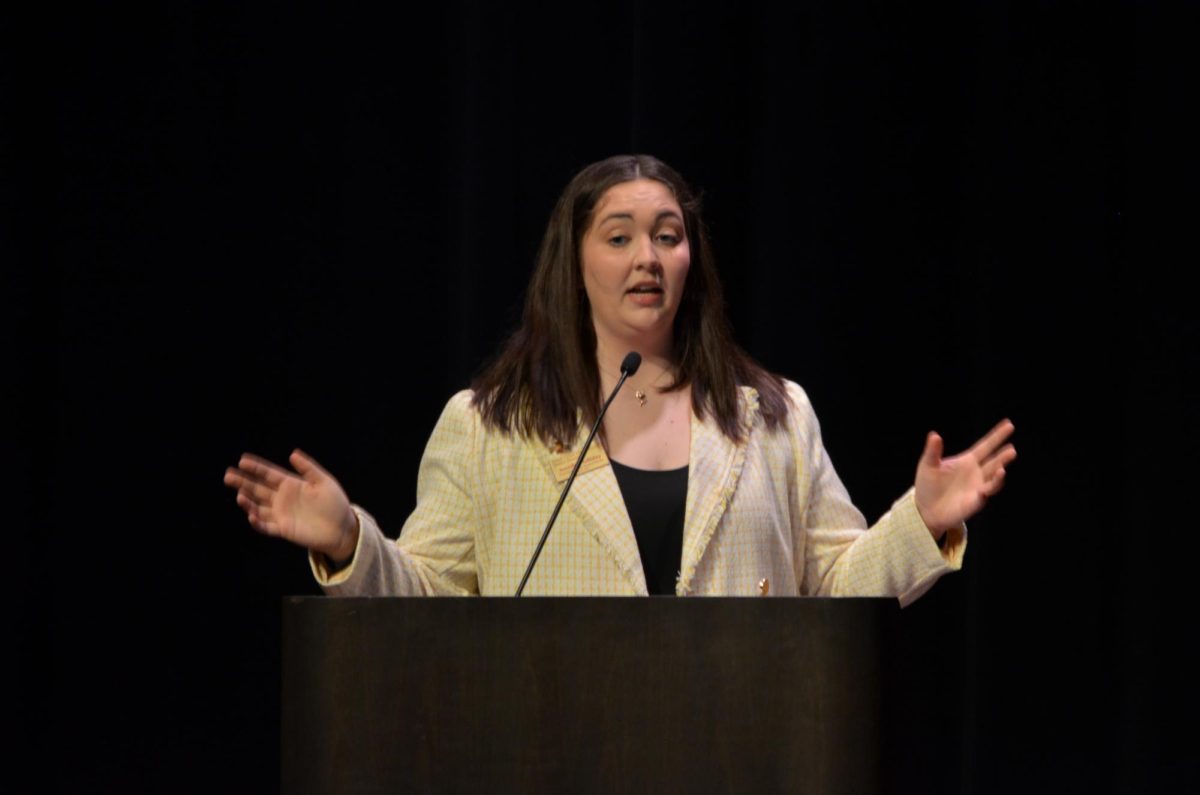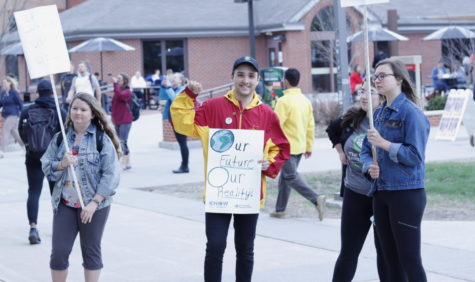Professor progresses in research with dissolvable material
Reza Montazami, assistant professor of mechanical engineering and the creator of a way to fully dissolve electronics down to virtually nothing, is working toward his long-term goal of remotely activating electronics to dissolve.
April 18, 2014
Imagine a world in which a lost credit card could melt away or a medically-implanted electronic device could dissolve as soon as it finished its job.
Reza Montazami and his research team at Iowa State are experimenting with materials they call “transient electronics” or “transient materials,” special polymers that are designed to melt away when a trigger is activated. They have the potential to open doors in the medical and military fields, among others.
Montazami, assistant professor of mechanical engineering, said he is making progress in a field of study that is fairly new to the world.
“Transient materials are a class of materials that undergo complete dissolution into their environment in response to an external stimulus,” Montazami said.
Montazami said that the idea of these materials has been with him for a long time.
“The idea dates back to when I was a grad student looking for ways to make free-standing electrodes,” he said. “Thoughts evolved over the years to transient electronics.”
Nastaran Hashemi, a member of Montazami’s team and an assistant professor of mechanical engineering, said Iowa State gave her an opportunity to further her research on the materials.
“I have always been interested in exploring new biodegradable materials for various biological studies,” Hashemi said. “At Iowa State University, I was presented with the opportunity to pursue this field more seriously.”
Montazami said one of his main goals is to develop the technology further and to explore different applications for the materials.
Hashemi echoed his thoughts on the advancement of the technology.
“[We want to] further our understanding of transient electronics and explore new biomedical applications such as drug delivery and tissue engineering,” she said.
Montazami said that research so far on the materials has been difficult.
“The objective is to have fully functional devices until the point you don’t need them anymore,” he said. “It is rather challenging to have a very stable system and push it into self-destruction in a short time.”
The team of researchers — including Mahendra Thunga, postdoctoral research associate in materials science and engineering; Handan Acar and Simge Cinar, postdoctoral research associates in mechanical engineering; Montazami and Hashemi — has not received any funds for the research yet. It is waiting on a proposal to the National Science Foundation, the military and many other groups for the funding.
Michael Kessler, director of Washington State University’s School of Mechanical and Materials Engineering and formerly an employee at Iowa State, is also working on the project with the research team.
Montazami said that applications for these transient materials are almost endless.
“[The technology could be used] in passports, credit cards, ID cards, data storage devices for military applications and implantable bioelectronics,” he said.
Living in a world in which you can make a lost credit card melt away isn’t that far away, Montazami said. He said a time when doctors can make bigger leaps in treatment options is just around the corner, especially with the help of these transient materials.
Montazami’s team is the only group in Iowa working on the transient materials and one of only a few other groups in the United States and Europe.
Montazami said that developing these new transient materials could possibly open the doors to many other technological advancements.
“New technologies always find their way into almost everything,” he said.
As for what comes next for Montazami and his research team, much is in the air. Montazami has the opportunity to possibly patent his work or sell it to investors.
“Perhaps I will patent the technology for now and work on advancing it,” he said. “Perhaps there will be interest on the technology from the private investing sector.”
Whatever his decision, the world has shown interest in his work.
“I have already been invited to the Founders Forum in London, which is a place to meet investors,” Mantazami said. “I am not sure if I will attend yet, but that is an option. Also, a couple of companies have contacted me regarding collaboration.”
The team has already presented its research at the meeting of the American Chemical Society in Dallas. It has also developed and tested a degradable antenna that is capable of data transmission.
The team was also recently published in a paper that was in the journal “Advanced Functional Materials.”

















